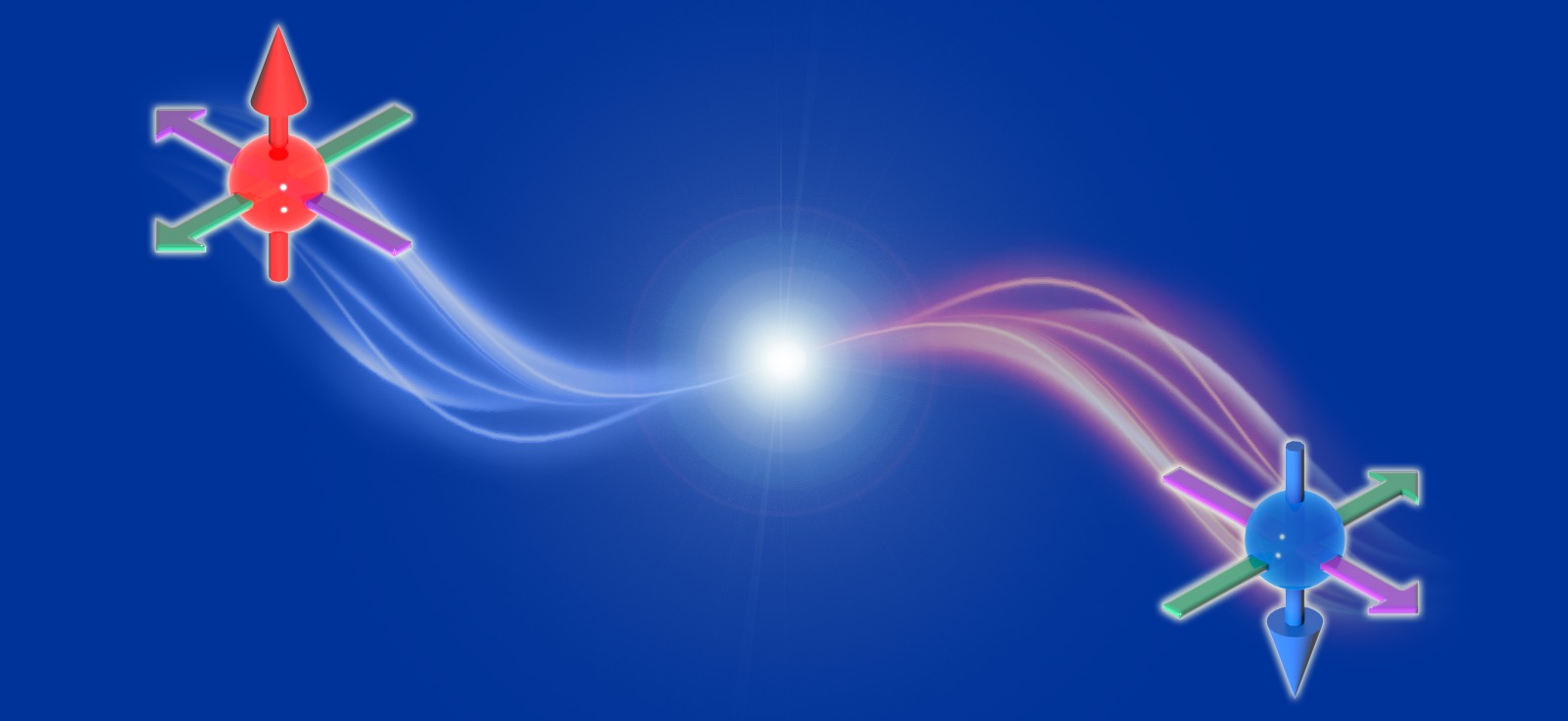Monday, 07 September 2020
New studies on particle entanglement dynamics in graphene for alternative quantum computing protocols
A new research recently published as a Rapid Communication in Physical Review B investigates intra-particle entanglement dynamics in graphene, which emerge from nonlocal correlations between intra-particle spin and pseudo-spin of electrons. The results of this study, developed by researchers of the ICN2 Theoretical and Computational Nanoscience group, open a door towards future alternative quantum information processing techniques.

Quantum properties of matter as entanglement, which can allow controlling quantum states of physical systems, are key to the development of quantum computing and higher-performance information processing. Entanglement usually defines a nonlocal correlation between two or more particles, such that the quantum state of each of them cannot be described independently of the state of the others, even when particles become separated by an extremely large distance. Entanglement can be also observed between internal degrees of freedom of a single particle, which are independent parameters describing the state of a system, as physical coordinates define the position of a point in space. The comprehension of these phenomena, called inter- and intra-particle entanglement, can lead to manipulating the quantum states of physical systems, including materials as graphene and topological matter as a whole.
In a paper recently published in Physical Review B as a Rapid Communication, researchers from the ICN2 Theoretical and Computational Nanoscience group, led by ICREA Prof. Stephan Roche, present a study on the origin, dynamics and magnitude of intra-particle entanglement between various degrees of freedom of electrons propagating in graphene. In particular, they explore the quantum correlations between the spin, defined as the intrinsic angular momentum of particles, and the pseudo-spin, which is a property analogous to spin that emerges in lattice structures and depends on their specific geometrical symmetries.
The authors of this study show that large intra-particle entanglement is a general feature of graphene supported onto a substrate and that its generation and evolution is independent of the initial state of the system. In addition, it may be robust to disorder and dephasing, which means that, if an interaction compromised the intra-particle entanglement, it would regenerate. This research also suggests that the properties of intra-particle entanglement in graphene should be relevant to the dynamic of inter-particle entanglement between pairs of electrons: in fact, the evolution of the first phenomenon is reflected in the second. Because of this, intra-particle entanglement might be detected indirectly in experiments via inter-particle correlations.
These results unveil unexplored paths to understanding and manipulating entanglement phenomena in a family of materials, called Dirac materials, which includes graphene: this name is due to the fact that they are systems that can be described by the Dirac equation of relativistic quantum mechanics. The ability to detect and manipulate entanglement in such materials could become an unprecedented resource for future research on the application of this phenomenon to quantum information processing.
Reference article:
Bruna Gabrielly de Moraes, Aron W. Cummings, and Stephan Roche, Emergence of intra-particle entanglement and time-varying violation of Bell's inequality in Dirac matter, Phys. Rev. B 102, 041403, July 2020. DOI: 10.1103/PhysRevB.102.041403

